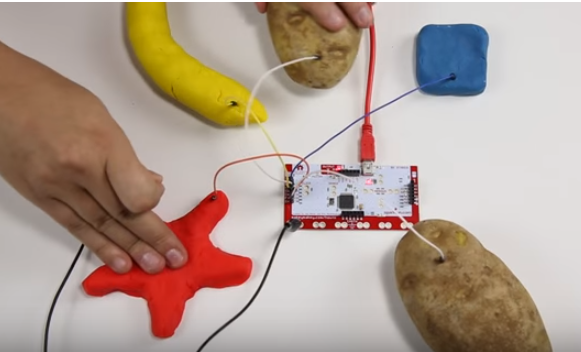Megan Hemmings

Recent Posts
This Saturday, July 20, marks the 50th anniversary of the moon landing. To celebrate, we searched the web for all projects moon and space related. Here are some of the favorite ones we found:...
Continue reading
A recent visit to a local classroom to teach students about conductivity using MakeyMakeys presented an unexpected problem: what is the best way to clean alligator clips?...
Continue reading
Circuits are the basis of electronics, so, let’s take a few moments to break them down and discuss what they actually are. A circuit is a loop through which current can flow. A power source, such as ...
Continue reading
When collecting data, the sheer volume of it can quickly become overwhelming. Rows and rows of information become difficult to quickly scan and gain any useful information from. That is where data ...
Continue reading
A great way to introduce students to circuits and electricity is by using Makey Makeys to test if different materials are conductive or not. We recently visited a 2nd and 4th grade class to teach ...
Continue reading
As the end of the school year approaches, it’s time to start thinking about summer plans. And it turns out, our summer is going to be very busy! If you will be attending any of these conferences, be ...
Continue reading
As a follow up to last week's post about the value of summer programs to introduce students to physical computing, we caught up with Marcus Duvoisin, the Director of Curriculum & Instruction at ...
Continue reading
For those looking to bring electronics and physical computing to students, summer provides a great opportunity. Outside the restrictions of typical classroom life (standards, testing, scheduling, ...
Continue reading
Capacitors are used to store energy. But they aren’t batteries. So what are they used for and how do they work?...
Continue reading
Each summer, SparkFun hosts a 5-day professional development workshop, Microcontrollers for Educators, to help teachers and other educators learn how to bring computer science and computational ...
Continue reading








